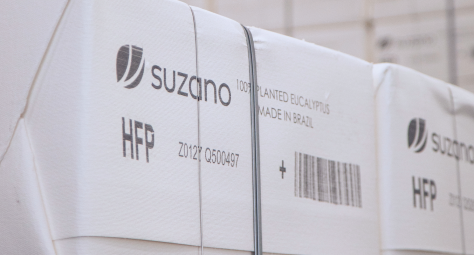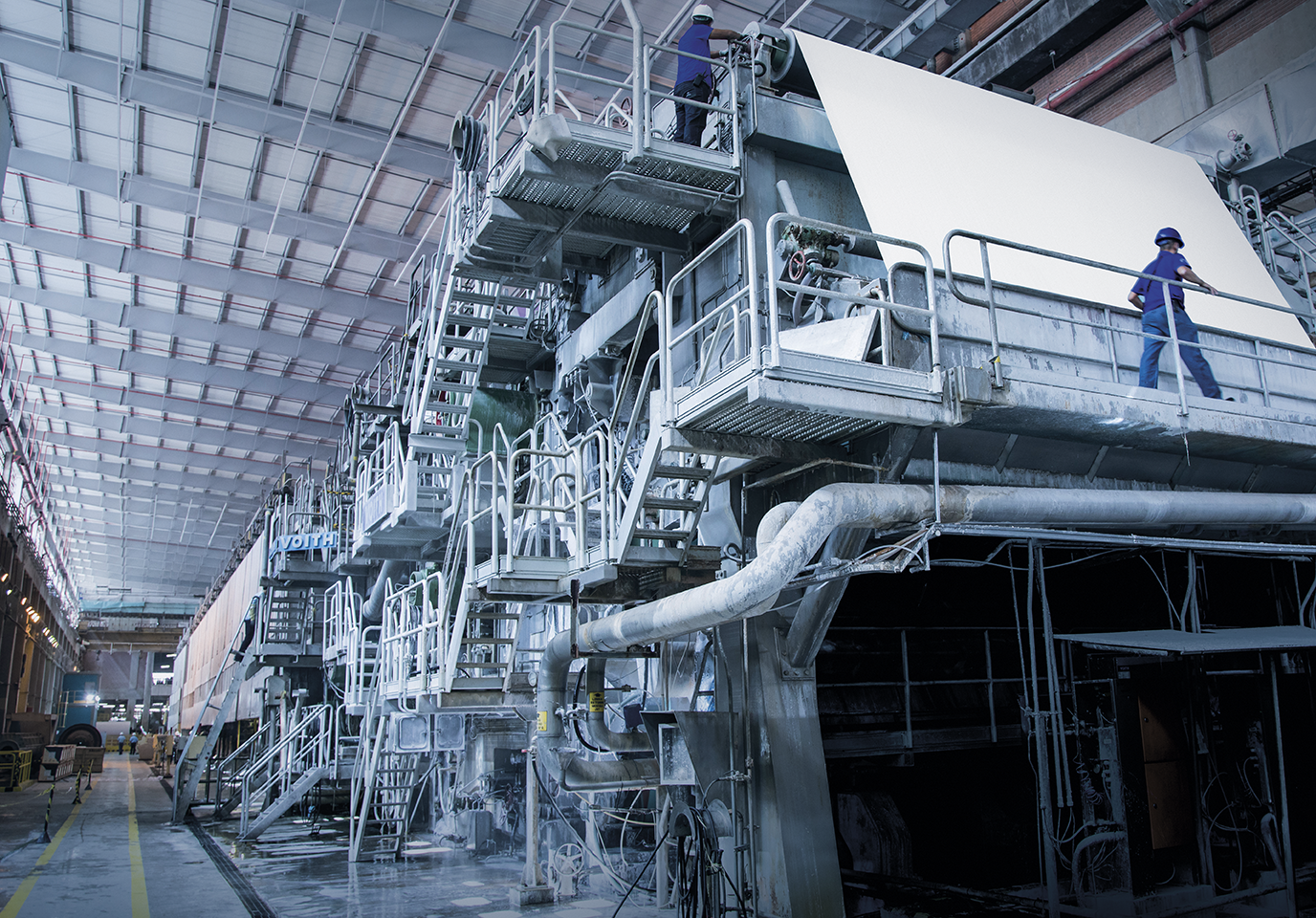sobre o que você deseja falar?


perguntas, sugestões ou problemas técnicos envolvendo a plataforma

informações sobre a empresa


Commitments to Renewing Life
For planet
Click below to know more
58.15 %
Climate change is a major global challenge. According to the World Economic Forum's Annual Global Risks Report¹, the most likely risks over the next ten years are the failure of climate action (in first place) and weather extremes (in second place). The planet has been experiencing temperature increases, mainly due to anthropogenic actions, which promote the emission of greenhouse gases (GHG), resulting in a series of impacts² on natural ecosystems and communities and the development of economic activities.
Combined with the need to act to mitigate and adapt to climate change, the private sector is taking a leading role in this agenda and seeking to understand how these issues affect its economic and financial performance and what business strategies can respond to the predicted scenarios of rising temperatures. This includes risks and opportunities associated with an economy resilient to climate change and low carbon - in other words, oriented towards generating capital with less intensity in GHG emissions.
Suzano has historically reduced the emissions linked to its production in its quest for process efficiency. With a degree of renewability in the energy matrix³ of over 88% (scope 1), the company's GHG emissions intensity indicators per ton of product produced are currently one of the best in the sector. Suzano already has a low intensity indicator compared to its main market competitors.
We understand that acting to combat climate change4 is everyone's role, and the integrated operation of our business - which links our forests to our industrial units - places us as central players in advancing this agenda. That's why ensuring that we continue to work on decarbonizing our operations inspires us to develop better solutions.
The sum of the emissions resulting from our production process (Scope 1) and the purchase of electricity (Scope 2), mapped annually in the Greenhouse Gas Inventory5, is about the volume of finished products (pulp, paper, and consumer goods).
Our emissions intensity target aligns with the Paris Agreement, established in 2015. According to the Transition Pathway Initiative, our emissions intensity is already one of the lowest in the sector.
Reduce the intensity of Scope 1 and 2 greenhouse gas emissions by 15% - from 0.2241 tCO₂e/t to 0.1905 tCO₂e/t by 2030⁷
In 2024, Suzano acquired two plants from Pactiv Evergreen, which were effectively incorporated into our activities at the beginning of October. This move directly impacted the results of the Commitment, which was calculated as follows:
i) Methodology according to GHG Protocol rules, including improvements and Suzano Packaging's emissions for the whole year, which resulted in changes to the 2015 base year figures, results for 2022 to 2024, and updating of the 2030 target KPI; and
(ii) a separation between pre-existing operations and new Suzano Packaging operations.
Thus, we obtained the following results:
1) 0.2046 tCO₂e/t, a reduction of 2.9% compared to the previous year. This result takes into account the methodology according to the GHG Protocol rules, including improvements and Suzano Packaging's emissions for the whole year, which resulted in changes to the figures for the 2015 base year, results for 2022 to 2024, and an updated KPI for the 2030 target;
2) 0.1803 tCO₂e/t, considering only pre-existing Suzano operations and 0.5965 tCO₂e/t considering Suzano Packaging operations in 2024.
Suzano applies the GHG Protocol methodology to calculate and present the GHG emissions of each subsidiary for the entire year reported, regardless of the time of financial incorporation.
To this approach, which Suzano has already adopted, we revised the methods for calculating the GHG Inventory following the methodology of the GHG Protocol and ISO 14.064. This revision was based on continuous improvement and methodological enhancements, such as updating the GWP indices referring to the IPCC's Fifth Assessment Report (AR5), enhancements to the emission factors of scope 1 sources, and expanding the accounting of the material and applicable categories of scope 3, from 6 to 10 categories. Given the representativeness of the aforementioned changes, the base year (2015) was revised for scopes 1 and 2, and emissions from the relevant scope 3 categories were also incorporated in 2022 (base year), 2023, and 2024.
| Scope 1 and 2 emissions | Results achieved: emissions | |
|---|---|---|
| tCO₂e | tCO₂e/t | |
|
2015 |
2,430,946.22 |
0.2241 |
|
2022 |
2,783,860.04 |
0.2111 |
|
2023 |
2,702,132.58 |
0.2107 |
|
2024 |
2,857,107.81 |
0.2046 |
We will continue to implement initiatives to improve operational efficiency and reduce fossil fuel consumption, strengthening the engagement of partner areas, and we will intensify the search for financial instruments that can support the implementation of new decarbonization technologies.
1. Find out more at: https://reports.weforum.org/docs/WEF_Global_Risks_Report_2025.pdf
2. Source: Intergovernmental Panel on Climate Change (IPCC).
3. For more information on our energy management, go to Energy Management.
4. For more information on Suzano's context and relationship with Climate Change, visit the link.
5. The 2024 Greenhouse Gas Inventory was externally verified following the standards of NBR ISO 14064 and the Brazilian GHG Protocol Program by an independent third party.
6. The base year (2015) for scopes 1 and 2 was revised due to the revision of the GHG Inventory calculation methods following the GHG Protocol and ISO 14.064 methodology and the inclusion of Suzano Packaging's emissions for the whole year. This revision was based on continuous improvement and methodological enhancements, such as updating the GWP indices referring to the IPCC's Fifth Assessment Report (AR5), enhancements to the emission factors of scope 1 sources, and expanding the accounting of scope 3 material and applicable categories from 6 to 10 categories.
7. These figures consider the change in the 2015 base year figures and the updating of the 2030 target KPI due to the improvements made to the 2024 Inventory and Suzano Packaging's emissions for the whole year;


Connect half a million hectares of priority areas for biodiversity conservation in the Cerrado, Atlantic Forest, and Amazon.

Make available 10 million tons of renewable-source products that can replace plastic and other petroleum-based products by 2030.


Remove 40 million tons of carbon from the atmosphere by 2025; Reduce by 15% the intensity of the Greenhouse Gas emissions of scopes 1 and 2, per ton of production...

Increase water availability in all the critical watersheds¹ in Suzano's areas of operation by 2030 and reduce by 15% the water captured in our industrial operations...
73.4 %
Climate change is a major global challenge. The planet has been experiencing temperature increases, mainly due to anthropogenic actions promoting greenhouse gas emission (GHG). These impacts on natural ecosystems and communities and the development of economic activities are extensive.
The Intergovernmental Panel on Climate Change (IPCC), in its report Climate Change and Land¹, describes that "all assessed modeled pathways that limit warming to 1.5°C or well below 2°C require land mitigation and land use change, with most including different combinations of reforestation, afforestation, reduced deforestation and bioenergy with high confidence."
Suzano has a significant forestry base, with a total area of approximately 2.8 million hectares, which includes eucalyptus plantations and one of the largest areas of privately protected native forests in Brazil (conservation and reforestation), with approximately 1.1 million hectares. For the coming years, we have strategies to expand into anthropized or degraded areas, increasing the vegetation cover. Conservation areas and eucalyptus plantations contribute directly to removing and storing carbon dioxide (CO₂).
We understand that acting to combat climate change is everyone's role, and the integrated operation of our business - which links our forests to the industrial units - places us as central players in advancing this agenda. Understanding the importance of effective measures in the short term, Suzano reaffirmed its commitment to removing more carbon from the atmosphere than it emits and announced that it is bringing forward by five years the target of eliminating 40 million tons of CO₂e from the atmosphere from 2030 to 2025. We remain committed to doing more than neutralizing direct and chain emissions. Our goal is to remove additional and significant amounts of carbon from the atmosphere, which is an extra and equally essential tool in addition to emission reductions to combat the climate crisis.
Net carbon removal resulting from the balance between Scope 1 emissions (direct), Scope 2 (from electricity purchase), and Scope 3 (indirect emissions) and CO₂ removal through eucalyptus plantations and conservation areas.
Remove 40 million tons of carbon - from zero to 40 million by 2025
In 2024, we achieved a balance of 2,256,855 tons of carbon removed over the year, resulting in an accumulation of 29.4 million tons of CO₂ equivalent removed since 2020⁴. This result represents a 73.4% advance on the target.
The balance is the result of lower fossil emissions in scopes 1 and 3 (of the categories considered in this target) and a positive forest balance for removals, coming from the input of the base from previous years (plantations), acquisition of new areas, maintenance of the standing forest, and the corresponding harvest. In preservation and conservation areas, we continue to see an increase in removals due to the increase in area and evolution of the forests.
In 2024, we incorporated the carbon credits (VCUs) traded and/or retired in 2023 and 2024, discounting the value of total net removals (which is why the 2023 result changed slightly).
| Fighting the climate crisis | 2020 | 2021⁹ | 2022⁹ | 2023⁹ | 2024⁹ |
|---|---|---|---|---|---|
| tCO₂e | tCO₂e | tCO₂e | tCO₂e | tCO₂e | |
|
CO₂ balance |
-15,200,312.00 |
-24,096,569.00 |
-22,011,839.00 |
-27,111,149.00 |
-29,393,143.25 |
For 2025, we will continue to expand our forestry base, which aligns with our strategies for positioning ourselves in the pulp and bioproducts market. In addition, we will continue with our conservation and ecological restoration programs, which will result in increased removals over the years. It is important to note that the volume of removals needed to reach the target is 10.6 M tCO2, except the unfavorable water scenario experienced in Brazil in 2024.
In addition, as part of our commitment made in 2021 to the Business Ambition for 1.5°C and SBTi initiatives, we have submitted new GHG emission reduction and CO₂ removal targets for SBTi validation. The fossil emission targets are being approved, and the SBTi FLAG (Forest, Land Use & Agriculture Guidance) target is being interrupted by the suspension of the SBTI FLAG methodology for Timber & Wood.
Thus, we reaffirm our commitment to strengthening our ambitions through robust methodological approaches and accelerating our journey towards decarbonization and removing carbon from the atmosphere. In this sense, we will continue with this removal target until 2025, or until another recognized methodology is developed.


Connect half a million hectares of priority areas for biodiversity conservation in the Cerrado, Atlantic Forest, and Amazon.

Make available 10 million tons of renewable-source products that can replace plastic and other petroleum-based products by 2030.


Remove 40 million tons of carbon from the atmosphere by 2025; Reduce by 15% the intensity of the Greenhouse Gas emissions of scopes 1 and 2, per ton of production...

Increase water availability in all the critical watersheds¹ in Suzano's areas of operation by 2030 and reduce by 15% the water captured in our industrial operations...